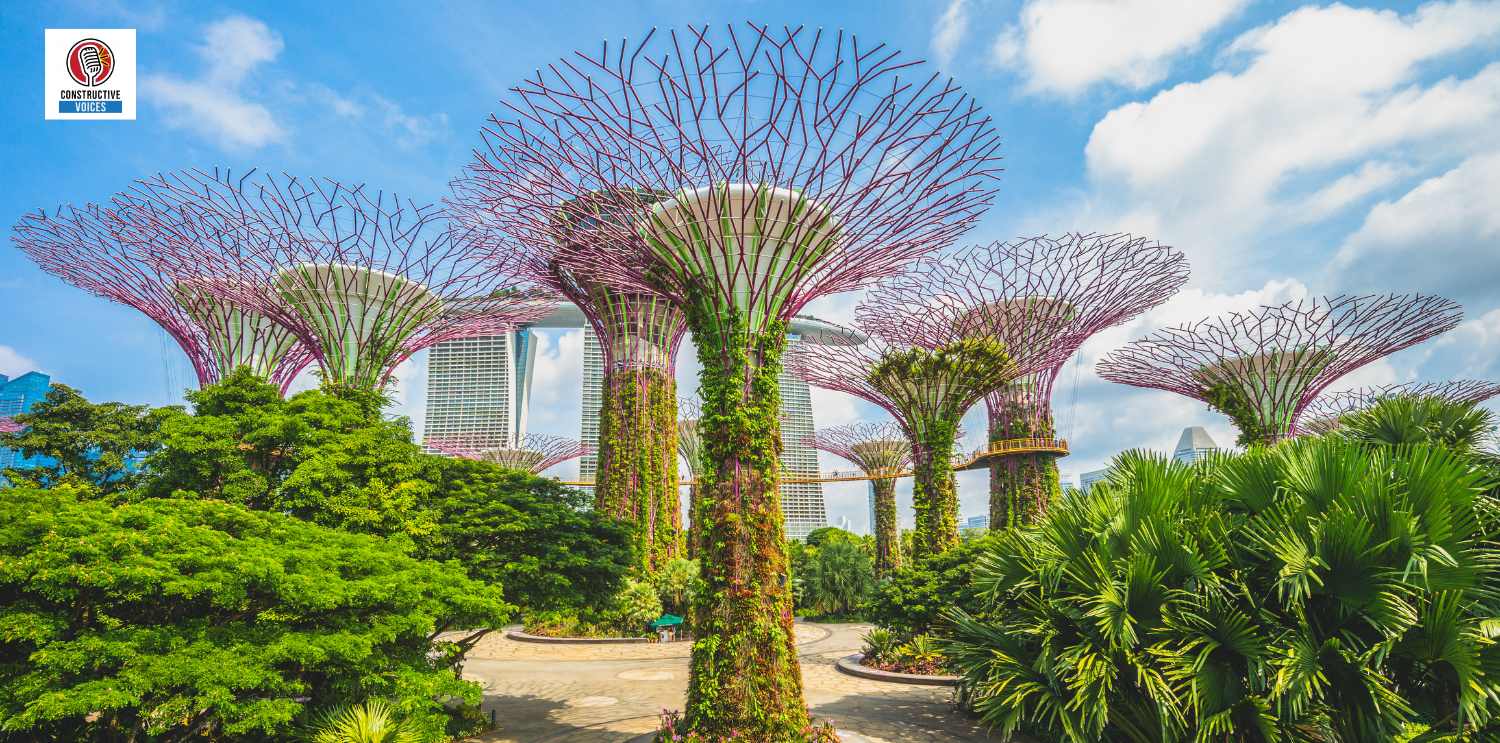North Macedonia Biodiversity and the Built Environment
Did you know that North Macedonia is home to over 4,200 identified plant species, making it a biodiversity hotspot in Europe? This small Balkan country boasts an astonishing range of flora and fauna, with diverse natural habitats that support an abundance of ecological diversity. From lush forests to pristine lakes and majestic mountains, North Macedonia offers a haven for wildlife and a rich tapestry of unique species.
Key Takeaways:
- North Macedonia is a European biodiversity hotspot with over 4,200 identified plant species.
- The country is home to diverse natural habitats, including forests, lakes, and mountains.
- Conservation efforts are essential to protect the country’s unique species and ecological diversity.
- The built environment should be planned and designed to incorporate green spaces and prioritize environmental sustainability.
- Preserving wildlife habitats is crucial for the long-term well-being of North Macedonia’s ecosystems.
The Importance of Biodiversity for Ecosystem Health
Biodiversity is essential for the health and well-being of ecosystems, playing a crucial role in maintaining balance and stability. It encompasses the variety of living organisms, their genetic diversity, and the different habitats in which they exist.
Biodiversity contributes to the overall ecosystem health by providing a range of essential ecological services.
- Disease prevention: A diverse ecosystem is better equipped to prevent the spread of diseases. When there is a variety of species present, it reduces the risk of a single disease affecting multiple species and helps maintain ecological balance.
- Soil fertility: Biodiversity is critical for soil health and fertility. Different plant species contribute to the organic matter content, nutrient cycling, and the overall structure of the soil. This fosters nutrient availability and supports the growth of diverse plant communities.
- Climate regulation: Biodiversity plays a significant role in mitigating climate change. Forests, for example, act as carbon sinks, absorbing and storing carbon dioxide from the atmosphere, thereby reducing greenhouse gas emissions. Wetlands also play an important role in regulating water levels and mitigating the impacts of floods and droughts.
- Air and water filtration: Natural ecosystems, such as forests and wetlands, act as filters, purifying the air and water. They remove pollutants and ensure the provision of clean air and water resources.
These are just a few examples of the numerous ecological benefits that biodiversity provides. Maintaining and preserving biodiversity is crucial for the long-term health and sustainability of ecosystems, as well as for the well-being of human populations in North Macedonia and around the world.
“In the end, we will conserve only what we love; we will love only what we understand, and we will understand only what we are taught.” – Baba Dioum
Conservation Efforts in North Macedonia
In order to protect the unique biodiversity of North Macedonia, the country has implemented various conservation efforts. These efforts aim to safeguard important habitats and species, assess the extinction risks of native species, and contribute to international agreements such as the Convention on Biological Diversity.
National Red Lists
As part of its conservation strategies, North Macedonia has created National Red Lists. These lists serve as a comprehensive assessment of the extinction risks faced by native species in the country. By identifying the species that are most vulnerable, conservationists can prioritize their efforts and take necessary actions to protect and conserve them. The National Red Lists play a crucial role in guiding conservation efforts and promoting the long-term survival of threatened species.
Protected Areas
A key component of conservation in North Macedonia is the establishment of protected areas. These areas, including national parks, nature reserves, and wildlife sanctuaries, are specifically designated to preserve and conserve important habitats and species. By designating these areas as protected, North Macedonia ensures that they are legally safeguarded from activities that may harm the environment and its biodiversity. Protected areas play a vital role in maintaining ecological balance and providing safe havens for wildlife to thrive.
Convention on Biological Diversity
North Macedonia is committed to international conservation efforts through its participation in the Convention on Biological Diversity. This global agreement aims to promote the conservation and sustainable use of biodiversity, taking into account the social, economic, and environmental aspects of biodiversity conservation. By being part of this convention, North Macedonia demonstrates its dedication to protecting and preserving its rich biodiversity for the benefit of present and future generations.
| Conservation Efforts | Description |
|---|---|
| National Red Lists | Assess extinction risks of native species |
| Protected Areas | Safeguard important habitats and species |
| Convention on Biological Diversity | Participate in global biodiversity conservation |
In conclusion, North Macedonia’s conservation efforts, including the creation of National Red Lists, establishment of protected areas, and adherence to the Convention on Biological Diversity, play a crucial role in preserving the country’s unique biodiversity. These initiatives contribute to nature protection policies and demonstrate North Macedonia’s commitment to the long-term conservation and sustainability of its natural heritage.
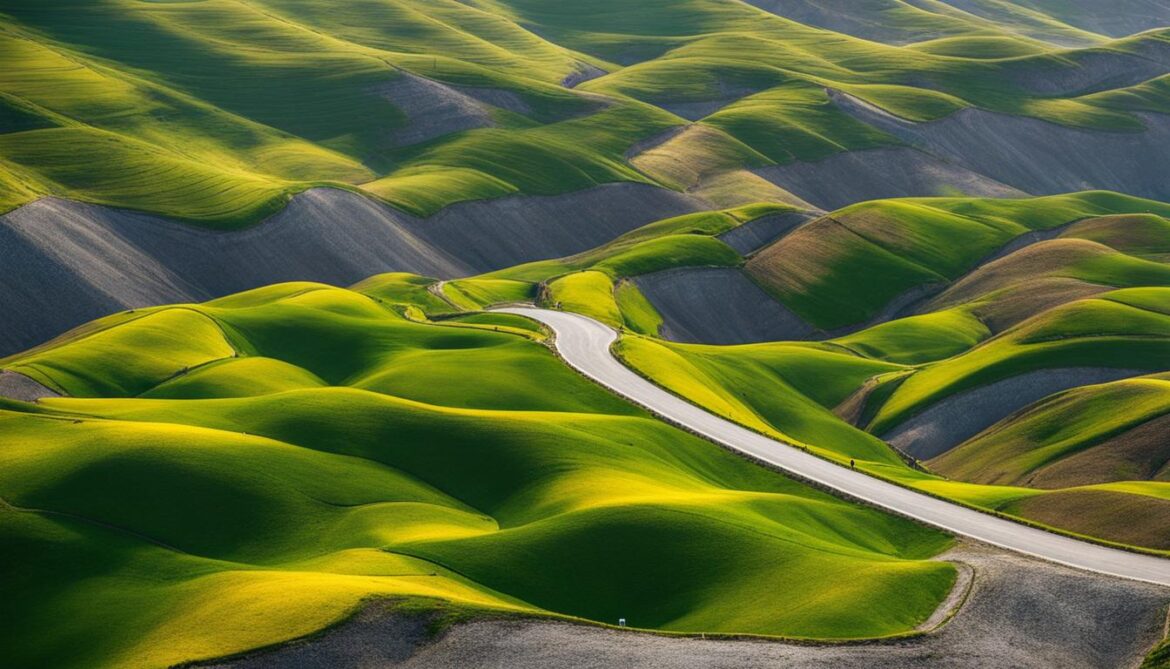
Threats to Biodiversity in North Macedonia
North Macedonia’s rich biodiversity is facing numerous threats that jeopardize the survival of unique species and the health of its ecosystems. These threats include illegal trafficking, habitat degradation, climate change, and gender imbalances in certain species populations. Understanding and addressing these challenges is crucial for the long-term preservation of North Macedonia’s biodiversity.
Illegal Trafficking: Disrupting Natural Populations
Illegal trafficking of wildlife poses a significant threat to North Macedonia’s biodiversity. The trade in endangered species, such as birds, reptiles, and mammals, disrupts natural populations and can lead to their decline or even extinction. The demand for exotic pets, traditional medicines, and rare animal products drives this illegal trade, putting immense pressure on vulnerable species.
Habitat Degradation: Impacting Plant and Animal Species
Habitat degradation, resulting from human activities such as deforestation, urbanization, and pollution, poses a severe threat to biodiversity in North Macedonia. As natural habitats are destroyed or altered, many plant and animal species lose their homes, reducing their populations and disrupting the delicate balance of ecosystems. The loss of key habitats, such as forests, wetlands, and grasslands, has a cascading effect on the entire ecosystem.
Climate Change: Affecting Habitat Suitability
Climate change is another major threat to biodiversity in North Macedonia. Rising temperatures, shifting rainfall patterns, and extreme weather events can alter the suitability of habitats for plant and animal species. Species that are unable to adapt or migrate to more favorable conditions may experience declines in population size and reproductive success, leading to reduced biodiversity.
Gender Imbalances: Impacting Reproductive Success
Gender imbalances in certain species can have significant consequences for biodiversity. In North Macedonia, the skewed sex ratios in some populations, such as reptiles and fish, can reduce reproductive success and genetic diversity. This imbalance can result from various factors, including pollution, habitat loss, and climate change, and can make populations more vulnerable to further threats and fluctuations in environmental conditions.
To address these threats to biodiversity, North Macedonia needs effective conservation strategies that focus on combating illegal trafficking, preserving and restoring habitats, mitigating climate change impacts, and promoting gender balance in species populations. By safeguarding biodiversity, North Macedonia ensures the long-term health and resilience of its ecosystems, benefiting both wildlife and human communities.

Unique Species in North Macedonia
North Macedonia is proud to host a diverse range of unique species, showcasing the country’s rich biodiversity. With over 300 bird species, 80 fish species, 84 mammal species, and thousands of plant species, North Macedonia is a treasure trove of natural wonders.
One of the key contributors to North Macedonia’s remarkable biodiversity is its three largest lakes – Lake Ohrid, Lake Prespa, and Lake Dojran. These bodies of water serve as important ecosystems, supporting a wide variety of aquatic wildlife.
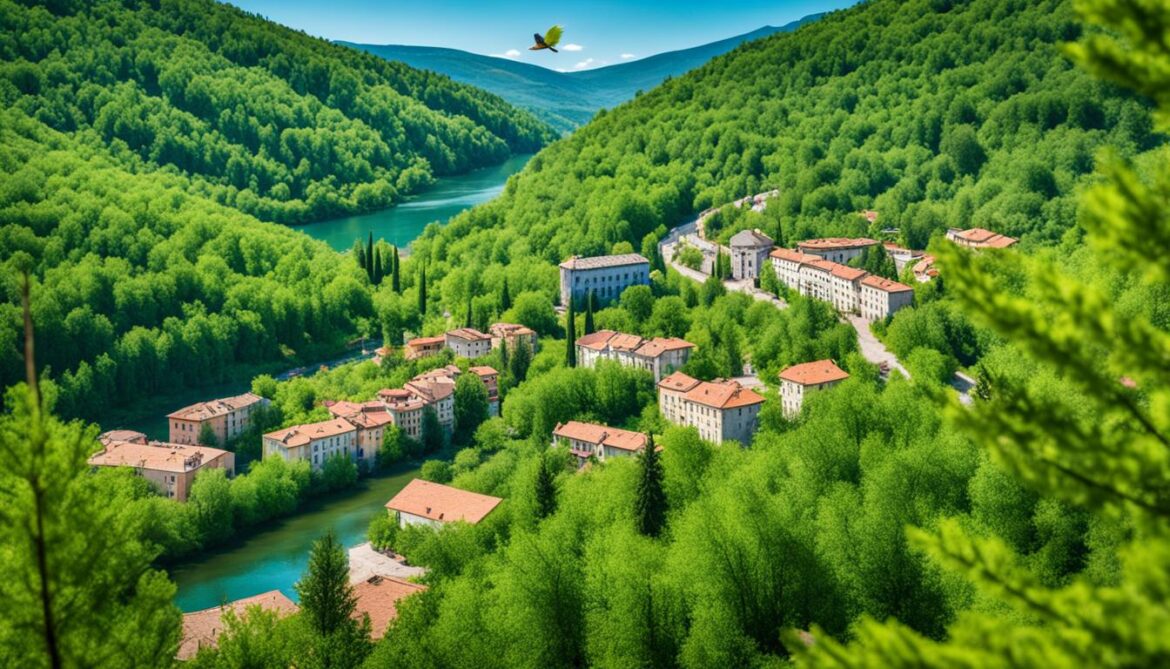
Bird Species
The avifauna of North Macedonia is a sight to behold, with a diverse range of bird species inhabiting forests, wetlands, and mountains. From majestic raptors soaring through the sky to vibrant songbirds serenading the countryside, the bird species in North Macedonia captivate both residents and visitors alike.
Fish Species
The lakes and rivers of North Macedonia are teeming with an impressive array of fish species. Anglers and nature enthusiasts can encounter various freshwater fish species, each with its own unique characteristics and adaptations.
Mammal Species
The rugged landscapes of North Macedonia provide sanctuary to numerous mammal species. From elusive lynxes roaming the forests to iconic brown bears inhabiting remote mountain regions, the mammalian inhabitants of North Macedonia contribute to its rich wildlife heritage.
Plant Species
North Macedonia boasts a wealth of plant diversity, with thousands of identified species. From vibrant alpine meadows to lush forests, the country’s landscapes are adorned with a vast array of plant life. These plants form the foundation of North Macedonia’s ecosystems, supporting a web of life and providing essential benefits to the environment.
Aquatic Wildlife in North Macedonia
The lakes of North Macedonia are teeming with a diverse array of aquatic wildlife, making them essential ecosystems for the preservation of biodiversity. Among these lakes, Lake Ohrid stands out as a haven for numerous endemic species and is recognized as a UNESCO World Heritage Site. With its remarkable contribution to aquatic biodiversity, Lake Ohrid alone hosts approximately 212 endemic species, underlining its global significance for conservation efforts.
Surrounded by breathtaking natural beauty, North Macedonia’s lakes provide a sanctuary for a wide range of aquatic fauna and flora. Let’s dive into the remarkable aquatic wildlife found in three prominent lakes: Lake Ohrid, Lake Prespa, and Lake Dojran.
Lake Ohrid
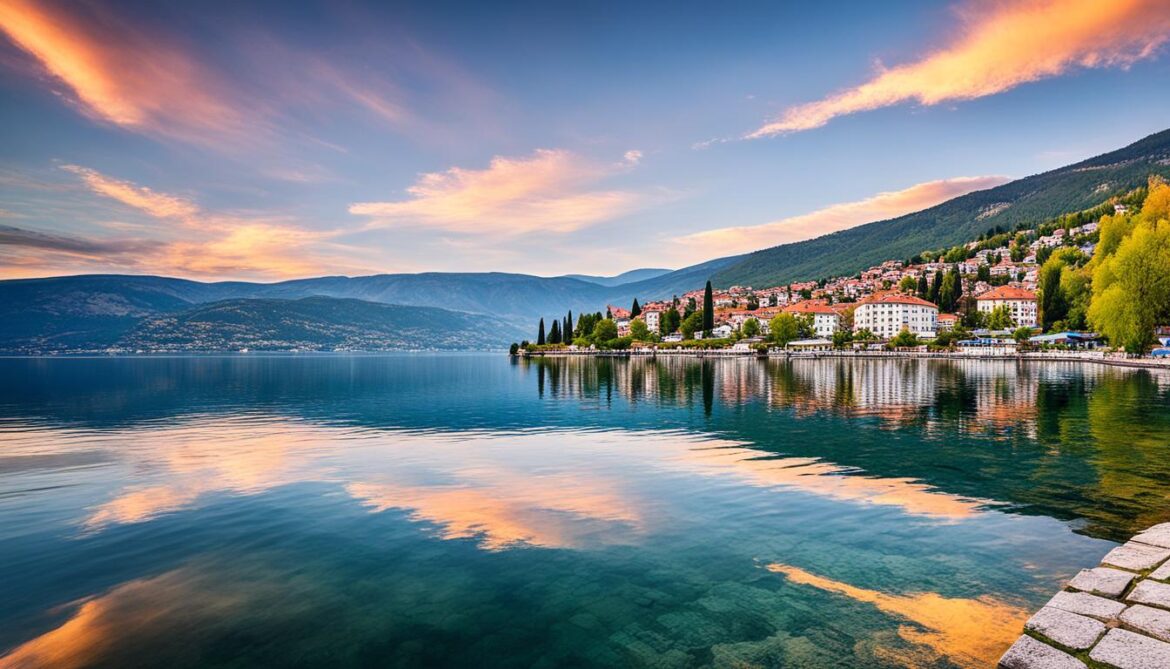
Lake Ohrid, located in southwestern North Macedonia, offers a unique habitat for aquatic wildlife due to its ancient origins and exceptionally clear waters. It is renowned for its remarkable biodiversity, supporting a rich variety of endemic species that cannot be found anywhere else in the world.
In terms of aquatic biodiversity, Lake Ohrid is North Macedonia’s crown jewel, providing a safe haven for an astounding number of endemic species.
The lake boasts approximately 212 endemic species, including fish, algae, crustaceans, and other aquatic organisms. Among them, the Ohrid trout (Salmo letnica) and Ohrid shad (Alosa agone) are highly valued endemic fish species found exclusively in Lake Ohrid.
Lake Prespa
Lake Prespa is a transboundary lake shared by North Macedonia, Albania, and Greece. It is characterized by its clear waters, diverse habitats, and rich biodiversity. This important lake complex supports a variety of aquatic wildlife, including numerous bird species, fish, and endemic plants.
The Prespa bleak (Alburnoides prespensis) and the Prespa barbel (Barbus prespensis) are endemic fish species found in the lake. These species, along with others, have adapted to the unique conditions of Lake Prespa, contributing to the ecological richness of the region.
Lake Dojran
Situated on the border between North Macedonia and Greece, Lake Dojran is a small but ecologically significant lake. Despite its relatively small size, it supports a surprising variety of aquatic wildlife, including several endemic species.
“Although smaller in size, Lake Dojran is a hidden gem of aquatic biodiversity in North Macedonia.”
The Dojran bleak (Alburnus dojranensis) and the Dojran trout (Salmo peristericus) are notable endemic fish species that inhabit this lake. Their presence highlights the importance of preserving the delicate balance of this unique aquatic ecosystem.
In conclusion, the lakes of North Macedonia, with Lake Ohrid at the forefront, provide invaluable habitats for a diverse range of aquatic wildlife. These lakes not only support endemic species found nowhere else in the world but also contribute to the overall biodiversity of the region. Protecing and conserving these vital ecosystems is crucial for the long-term sustainability of North Macedonia’s aquatic wildlife and the preservation of its rich natural heritage.
Diverse Avifauna and Mammals
North Macedonia’s diverse landscapes provide a haven for a wide array of bird species and mammals. The country’s forests, wetlands, and mountains support rich avifauna, while also being home to fascinating mammal species, including the Eurasian Lynx, Balkan Lynx, and Brown Bear.
The forests of North Macedonia serve as vital habitats for numerous bird species. These lush and verdant environments offer nesting grounds, food sources, and safe havens for avifauna. From woodpeckers and owls to songbirds and birds of prey, the forests are alive with the chirping and flapping of wings.
The wetlands of North Macedonia also play a crucial role in supporting avian life. These marshy and waterlogged areas are teeming with bird species, offering ideal conditions for foraging, breeding, and resting. Waders, waterfowl, and migratory birds flock to these wetlands, adding vibrancy and charm to the already diverse avifauna of the country.
The rugged mountains of North Macedonia provide yet another habitat for a variety of bird species. High-altitude areas, with their rocky cliffs and alpine meadows, attract unique birds, including birds of prey such as eagles, hawks, and vultures. These majestic creatures soar through the skies, showcasing their aerial prowess and adding to the awe-inspiring natural beauty of the mountains.
Beyond the avifauna, North Macedonia is home to a fascinating array of mammal species. The Eurasian Lynx, an elusive and powerful predator, roams the forests and mountains, claiming its spot as one of the top predators in the region. The critically endangered Balkan Lynx, with its distinctive spotted coat, is a symbol of the country’s commitment to biodiversity conservation. Another notable resident is the Brown Bear, a majestic and formidable creature that finds sanctuary in the protected areas of North Macedonia.
| Bird Species | Forest Habitat | Wetland Habitat | Mountain Habitat |
|---|---|---|---|
| Woodpeckers | Yes | No | No |
| Owls | Yes | No | No |
| Songbirds | Yes | No | No |
| Birds of Prey | Yes | No | Yes |
| Waders | No | Yes | No |
| Waterfowl | No | Yes | No |
| Migratory Birds | No | Yes | No |
North Macedonia’s diverse avifauna and remarkable mammals are testaments to the country’s commitment to preserving its natural heritage. By protecting and conserving these habitats, North Macedonia ensures the continued survival and thriving of its unique bird species and mammal populations.
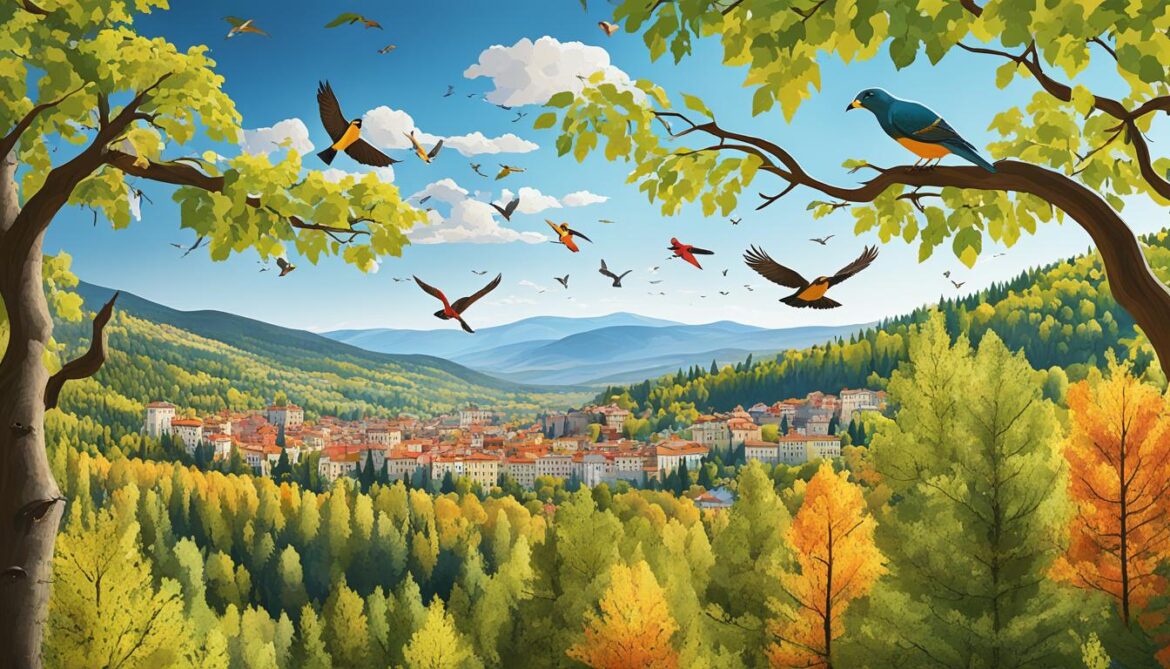
Endemic Plants
North Macedonia is renowned for its diverse flora, which includes several unique endemic plant species. These plants can be found thriving in the alpine meadows of Mount Baba, where they have adapted to the challenging mountain environment.
One of the notable endemic species is the Pelagonian Primrose (Primula pelagonica), a beautiful flowering plant that is endemic to the Pelagonia region of North Macedonia. It boasts vibrant pink flowers that add a splash of color to the rugged alpine landscape.
Another remarkable endemic species is the Macedonian Pine (Pinus peuce), a majestic coniferous tree that can be found on the slopes of Mount Baba. Known for its resilience and ability to withstand harsh weather conditions, the Macedonian Pine is considered a symbol of strength and endurance.
To showcase the endemic plants of North Macedonia in the alpine meadows of Mount Baba, take a look at the following table:
| Endemic Plants in Mount Baba | Scientific Name | Description |
|---|---|---|
| Pelagonian Primrose | Primula pelagonica | A vibrant flowering plant with pink flowers, endemic to the Pelagonia region. |
| Macedonian Pine | Pinus peuce | A majestic coniferous tree known for its resilience and endurance. |
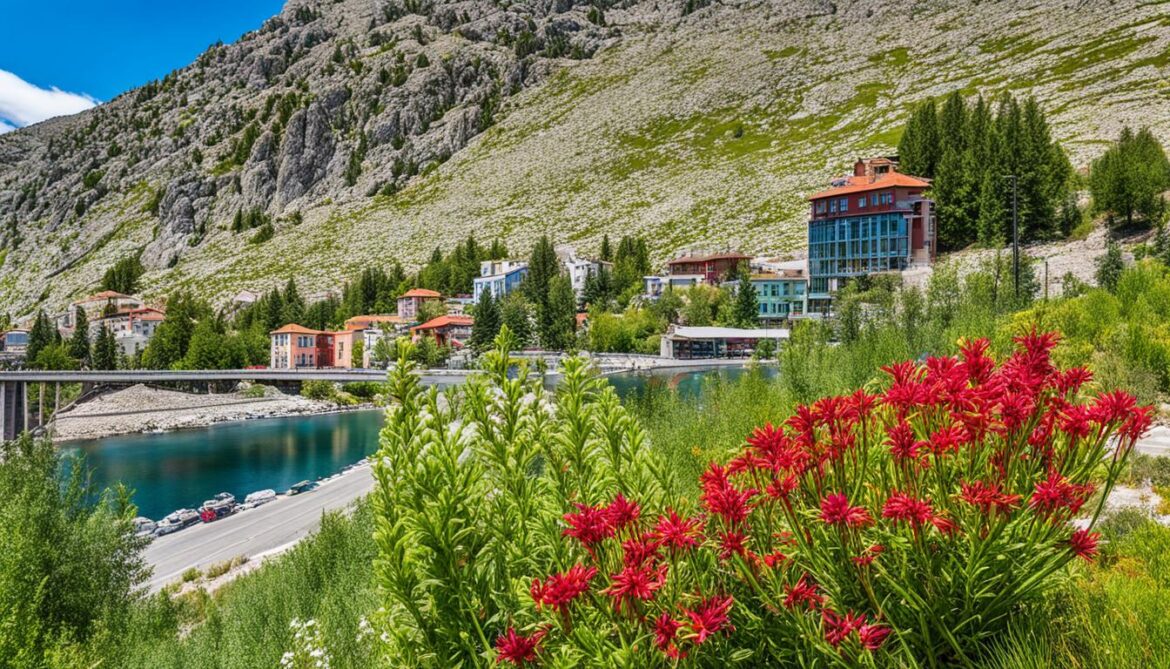
As we can see, the alpine meadows of Mount Baba in North Macedonia are home to these remarkable endemic plants, contributing to the country’s rich biodiversity. These unique species not only add beauty to the landscape but also play a vital role in preserving the delicate ecological balance of the region.
Plant Diversity in North Macedonia
North Macedonia is renowned for its impressive plant diversity, with over 4,200 identified species thriving within its borders. This rich variety encompasses a range of plant types, including vascular plants, algal species, and fungal species. The country’s lush forests, which cover a significant portion of its land surface, play a vital role in supporting this remarkable biodiversity.
Forests in North Macedonia are home to a diverse array of plant species, providing essential habitats and resources for numerous plant-dependent organisms. These thriving ecosystems contribute to the preservation of biodiversity and play a crucial role in maintaining the natural balance of the region.
One of the notable areas where plant diversity flourishes is Lake Ohrid. This renowned lake, located in the southwestern part of the country, is famous for its exceptional endemic plant species. These unique plants have evolved and adapted to the specific ecological conditions of the lake, making Lake Ohrid a fascinating site for researchers and nature enthusiasts alike.
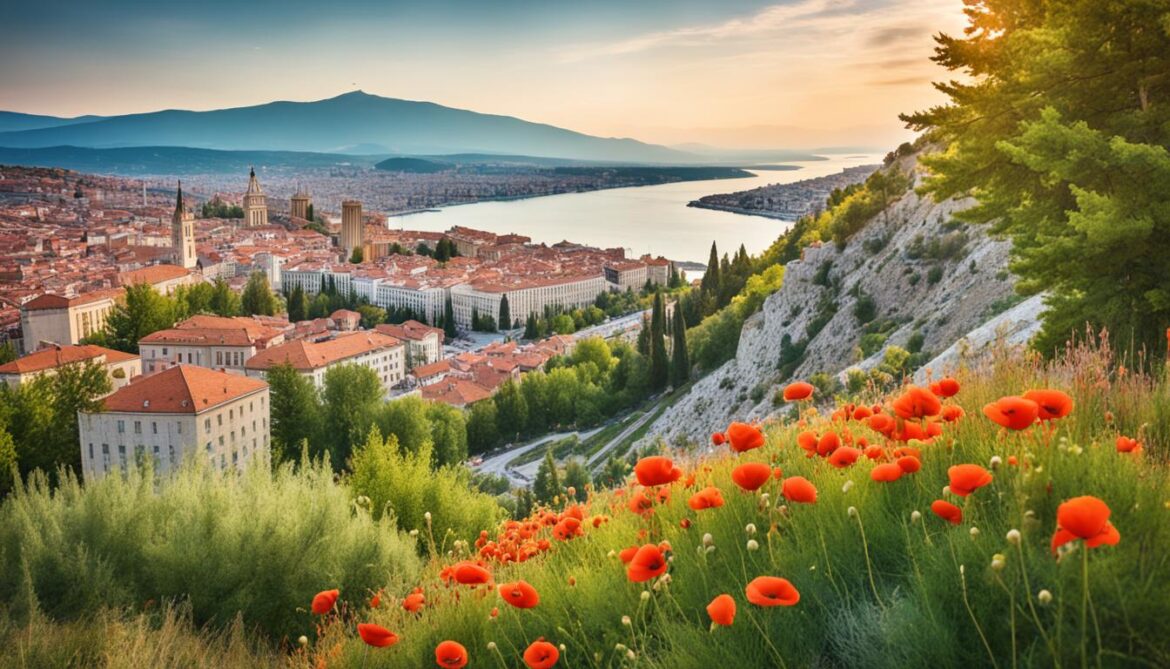
The stunning image above showcases the vast plant diversity found throughout North Macedonia, highlighting the country’s commitment to preserving its natural heritage.
Unique Plant Species in North Macedonia
| Plant Species | Location |
|---|---|
| Macedonian Pine (Pinus peuce) | Mount Baba |
| Pelagonian Primrose (Primula deorum) | Mount Baba |
| Turkish Hazel (Corylus colurna) | Mavrovo National Park |
| Siberian Wallflower (Erysimum sibiricum) | Pelister National Park |
| Macedonian Oak (Quercus trojana) | Mavrovo National Park |
This table showcases some of the unique plant species found in North Macedonia. Mount Baba, home to the Macedonian Pine and Pelagonian Primrose, is a particularly significant location for endemic plants.
“The plant diversity in North Macedonia is truly awe-inspiring. It reflects the country’s dedication to preserving its natural landscapes and supporting the delicate balance of ecosystems. North Macedonia’s forests and the iconic Lake Ohrid are crucial in nurturing this exceptional plant life.”
– Dr. Anna Petrova, Botanist
The passionate words of Dr. Anna Petrova, a renowned botanist, emphasize the importance of North Macedonia’s diverse plant life and the need for ongoing conservation efforts to protect these valuable ecosystems.
Conclusion
In conclusion, North Macedonia is a treasure trove of biodiversity, with its varied landscapes and unique species. The country’s conservation efforts are crucial in safeguarding this natural heritage against a range of threats. Illegal trafficking, habitat degradation, climate change, and gender imbalances all pose significant risks to North Macedonia’s biodiversity.
It is imperative for North Macedonia to continue implementing conservation measures to preserve its diverse ecosystems for future generations. Balancing biodiversity within the built environment is essential to promote sustainability and protect wildlife habitats. By prioritizing nature conservation and incorporating green spaces into urban planning, North Macedonia can maintain a healthy ecosystem and ensure the well-being of its population.
North Macedonia’s commitment to creating National Red Lists and establishing protected areas demonstrates its dedication to preserving its unique species and habitats. These initiatives align with international agreements such as the Convention on Biological Diversity, further reinforcing the country’s commitment to nature protection.
With its stunning lakes, diverse avifauna and mammals, endemic plants, and rich plant diversity, North Macedonia truly stands out as a biodiversity hotspot. By continuing its conservation efforts and raising awareness about the importance of preserving this natural heritage, North Macedonia can create a sustainable future that embraces both the built environment and its unique species.








